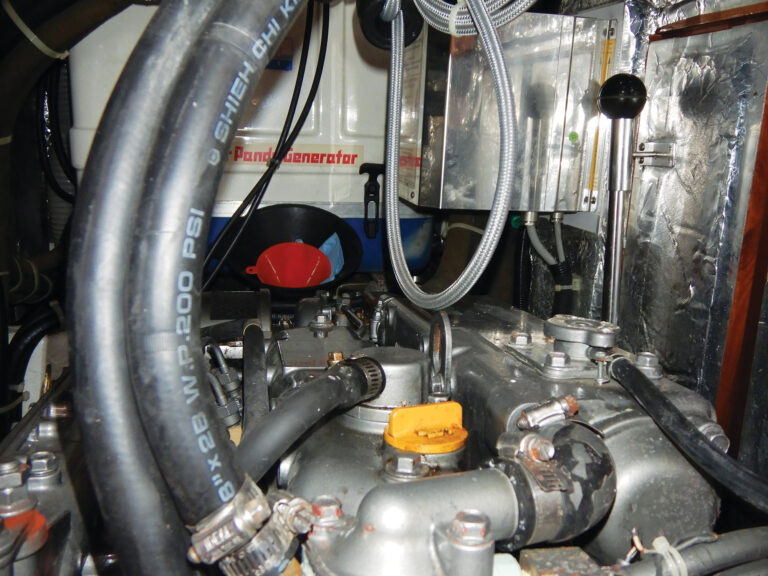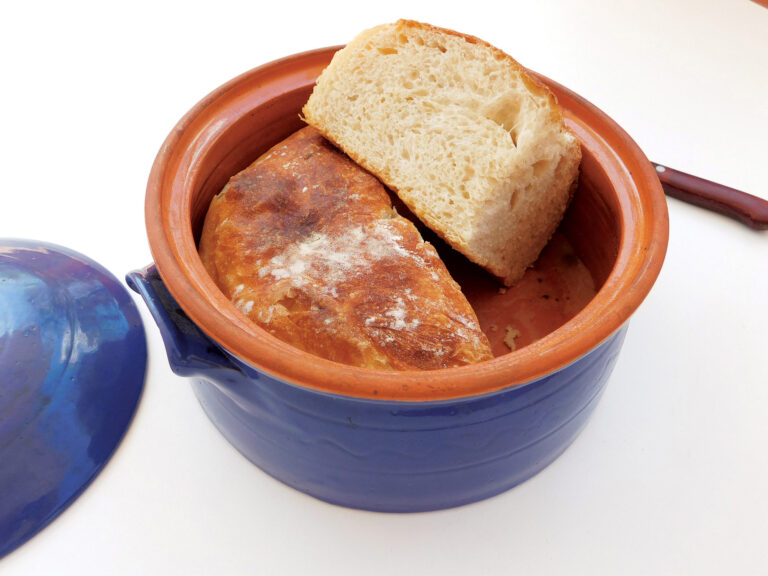
The headsail on every boat works well alone or in concert with the mainsail or a staysail. I enjoy skillfully trimming a jib because it always makes a boat sail faster and in balance, but the lessons I’ve learned haven’t been exclusive to the race course.
Years ago, I was sailing to Bermuda with the late Walter Cronkite aboard his Hinckley 64, Wyntje. As we approached the Gulf Stream, the wind velocity increased, as did the size of the waves. To keep the boat balanced, I started setting up to change to a smaller jib sail. It was hard work hauling the heavy Dacron jib on deck. Just before I started the sail change, Walter motioned for me to return to the cockpit, where he asked me: “If you want a smaller jib, why don’t you just roll it up?”
“Great idea,” I thought. We both laughed. As a long-time racer, I’d never been on a boat with a roller-furling headsail.
Of course, most cruising boats today use rolling-furling headsails. Trimming techniques are easy to master. Experimenting is a good way to test different settings. Once a boat is sailing well, I try to return to the same settings. It helps to use visual references to set up the headsail. Attach yarns as telltales to the leading edge of the sail. These are very helpful when we trim the sail. Generally, I like them about 1 foot aft of the luff. Spread the telltales out, with one telltale a quarter of the way down from the head, a second one at the halfway point, and a third positioned about three-quarters of the way down the luff.
Use the halyard to adjust the sail. In light wind, I ease off the halyard so that wrinkles, or scallops, appear on the luff. As the wind builds, I tighten the halyard to remove the wrinkles. When you ease or tension a halyard, the curvature of the sail, called the draft, will move accordingly. Your initial goal is to trim the sail with the maximum amount of draft located in the middle of the sail. If you need more speed, or if the wind lightens, power up the sail by moving the draft forward. If the breeze is on or you want to sail a higher course and point closer to the wind, move the draft aft.
You can also adjust the jib lead so the leading edge of the sail luffs evenly. If the telltale at the top of the sail luffs before the middle or the bottom, the jib lead should be moved forward. I recommend making small adjustments at a time. If the bottom telltale luffs first, then move the jib lead aft. When sailing on the wind, I trim the headsail so the leech of the sail is within a few inches of the spreader. It’s very important never to trim the headsail too tight, because the spreader can rip the sail.
The next reference point is the boat’s angle of heel. Most boats sail fastest upwind when heeling about 20 degrees. If the boat heels over too far, it’ll start making leeway, which means it’s sailing sideways. A properly balanced boat can be felt in the helm. I like to sail with a slight windward helm—that is, with the boat balanced so that the forces driving it turn it lightly toward the wind—on the tiller or wheel. If you have too much helm and have to struggle to keep the boat on course, reduce sail area or adjust the sail trim.
If the boat’s overpowered—that is, if it’s heeling too much—consider moving the jib lead aft so the wind spills out of the top of the sail. This reduces heeling. If the jib is too full, or round, it diverts wind into the mainsail and renders it inefficient. When you have too much of this backwind in the main, I recommend one or more of the following steps: Ease the jib sheet, moving the lead aft to reduce the power in the sail; use a snatchblock to move the jib lead outboard; change to a smaller sail; or, as Mr. Cronkite suggested, simply roll up some of the sail.

When sailing on a reach with the sheets eased, it again helps to move the jib lead outboard to open the slot between the headsail and the mainsail. Move the sheet lead forward to keep the jib telltales flying evenly.
Another helpful reference tip is to keep the leeches of the main and headsail close to parallel. Jibs are built with internal cords on the foot and the leech. If the edge of a sail is flapping, pull these cords tight until the sail is taut. Flapping sails are slow and can damage the leech.
Remember, sailboats go faster when you bear off only when you ease the sheets. Whenever you change course, or the wind shifts, a crewmember should always be ready to trim the headsail. If you’re altering course to steer clear of anther boat, a trimmer should always have the headsail sheet in hand, ready to make a quick adjustment as the helmsman changes course.
Always alert the crew well in advance of making a turn. Give everyone a job. When tacking, the helmsman should turn the boat slowly so the trimmer has time to trim the sail. I like to ease the windward sheet well before a boat is head-to-wind. It’s important to be sure that the old sheet continues to be cast off throughout the turn so there’s no tension on the sheet that’s been released. This helps the trimmer pulling the sheet in on the new tack. When trimming the sail during the tack, start with two turns on the winch. When the tension on the sheet increases, add two more turns, then grind it home. If the sail is well out, the helmsman can help the trimmer by steering up into the wind. This is important on boats with a small crew. Be careful not to allow too much slack in the windward sheet because it can flap and injure a crewmember.
Downwind, I like to fly the jib wing and wing in tune with the mainsail. This works when sailing directly downwind so both sails fly. It helps to keep one crewmember stationed by the shrouds to hold out the sheet. Adjust the sheet so there’s even tension on the leech and the foot of the sail. A whisker pole or spinnaker pole can also be used to set the sail to windward—this is an excellent setup.
Jibing is easy with a jib. Simply ease it out and trim in the new sheet just as the main is moving across the boat. It’s important to control both sheets during a jibe.
With good care, a headsail can last a long time. Wash the sail periodically. Keep it out of the sun. Roller-furling jibs should have an extra layer of cloth on the leech for protection when furled. Look for chafe or wear on a sail. Patch or sew small holes or cuts. Periodically check spreader patches and the corners of the sail. Minimize luffing during turns, and furl or fold sails that aren’t in use.
I often cruise under jib alone, with the mainsail doused, and I’m always pleasantly surprised by how fast and well a boat can sail in this configuration. At times, I use a staysail with the jib for extra power. The key is to keep the staysail well aft of the jib. Check to see that the leeches of both sails are parallel. Adjust the leads of the staysail just as you would with the jib, so it luffs evenly on the leading edge of the sail.
A good headsail is every sailor’s friend. They’re fun and rewarding to trim properly, and these sails are an essential component on a well-sailed boat.








